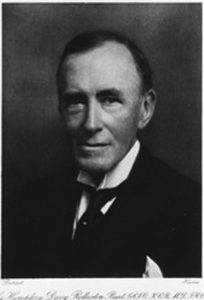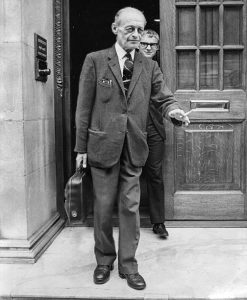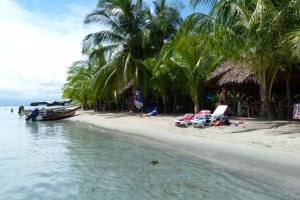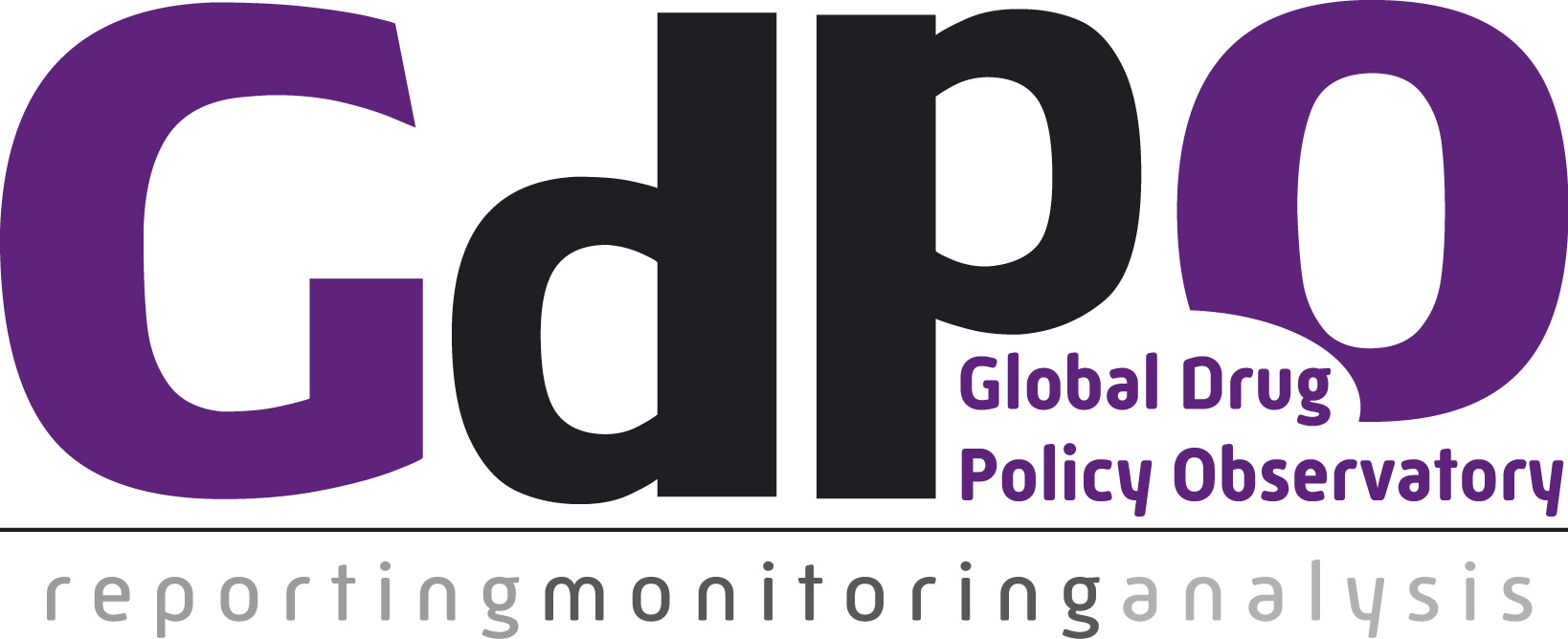British System, American Century: A short case study
Chris Hallam
This blog shows the intimate ties between the international and domestic domains of drug control. This is a well-known phenomenon; however, it involves considerable complexity. The lengths to which governments will go to reduce potential tension at the international level are apparent. This is especially so when states – as in the following case – are wary of the US position. At the same time, powerful domestic forces can counteract the influence of international powers, even when the United States is concerned, as in the aftermath of the Second World War.
The blog selects the example of Britain during that period in which the negotiations leading to the Single Convention were taking place. The then-famous ‘British System’ of drug treatment was a key aspect of Britain’s drug policy relationships; stemming from Sir Humphrey Rolleston’s inquiry into addiction that reported in 1926, the ‘British System’ permitted any doctor to supplyheroin, morphine, cocaine and other drugs to those who were dependent upon them. Unlike the present mode of ‘Heroin Assisted Treatment (HAT), the British System imposed few requirements on patients, who could take their prescription to a pharmacy, collect their drugs and consume them more or less at will. This depended on the regulatory context, the liberal views and the largesse of the doctor, but these were generally forthcoming.
Both the international and the domestic domains played a part in the changes that overtook the British regulatory framework in the 1950s and 60s, leading to the demise of the ‘British system’ of prescribing and its replacement with a much more restrictive ‘clinic’ system in 1968. The international dimension was always important, but in the period preceding the agreement of the 1961 Single Convention, it was especially significant as countries sought to shape the draft treaty to suit their national interests, or (less rationalistically) to forge the global order of intoxication according to their mythological image.
Following the war and the continuing rise of the United States as an international military, political and economic superpower, there was friction between it and Britain over aspects of the latter’s drug policies. The 1955 American attempt to impose a global prohibition on heroin was eventually faced down by the British government after internal pressure from the medical profession in support of the drug’s retention in medical therapeutics, including in the treatment of drug dependence. The medical profession was a powerful force in British politics and culture, sufficient to bring the government to resist US pressure.
Britain’s representative at the Commission on Narcotic Drugs (CND), the policy-making body for the new UN international drug control system, was J.H. ‘Johnnie’ Walker. Bing Spear, the Home Office civil servant who had written extensively on UK drug policy, identified Walker as providing the initiative that led to the first Brain Committee, which, commencing its meetings in 1958, reviewed the British drug control system for the first time since Rolleston did so in the 1920s. Government documentation from the mid- to late-1950s supports this claim. The context for Walker’s views was largely international, with the British System undergoing criticism from a number of countries, particularly the United States, through the mechanism of the new United Nations drug control regime.
In 1955, Walker sent a lengthy and thoughtful memorandum to the Home Office suggesting that it was time to look again at the British drug control system. Despite the system’s smooth domestic running, said Walker: ‘It so happens that a number of problems have arisen, or are on the horizon, which indicate that this is a suitable moment to review the present system of control.’ These problems or potential problems included the proliferation of new synthetic drugs such as pethidine and methadone; the UK policy on addiction (by which was meant in particular the Rolleston-inspired regulations permitting the long term of maintenance of opiate habits and the belief in the ‘stabilised addict’); addict doctors; and improper prescribing and supplies to addicts (the issues surrounding ‘script doctors’). The memorandum paid the greatest attention to the second and the fourth of these categories, replicating the situation that obtained when the Rolleston Committee reported and showing that the issue of doctors prescribing dangerous drugs to addicts had remained at the heart of governmental anxieties. Walker claimed that the Rolleston Committee never intended the ‘lavish supply of dangerous drugs to addicts merely for the maintenance of addiction’. He then made reference to a ‘small but potentially dangerous group of drug addicts (mainly heroin addicts) in London at the present time’. This group was ‘disturbing’, as it represented ‘the first real sign of a significant increase in heroin addiction for very many years’. The group’s members had become addicted young and were mostly under thirty – often nearer twenty; many shared an involvement in one particular field of entertainment and therefore met socially at regular intervals – a reference to the jazz club scene. The social context of this drug use made it ripe for proselytism, contended Walker, ‘always one of the more dangerous features of drug addiction’.
He continued that many ‘appear to obtain supplies from a small number of doctors who make no attempt whatever at cure or even, so far as can be judged, at reduction of the dose. In other words, their addiction is deliberately fed, almost certainly in some instances for purposes of gain.’ Walker concluded that: ‘The “script doctor” who thus makes drugs freely available to addicts represents a special problem…’
Walker’s memorandum showed that the Home Office was by this time fully aware of the flourishing new London addict subculture, a full ten years before these facts were published in the Second Brain Report. As noted by Spear, the peculiar thing is that the first Brain Committee did not address it in their deliberations nor their report. At the Home Office, it was Tom Green (who succeeded Walker at the Drugs Branch) who led the drafting of the advice and information sent to the Ministry of Health, from which emerged the shape of the review. For ‘some inexplicable reason’, while drawing heavily on Walker, Green did not include evidence of the emergence of London’s expanding heroin subculture.
One possible reason for this startling omission lay in the international relations around the topic of drug control. Walker points out that US medical opinion was firmly against maintenance and the notion of the stable addict. The ‘strongly held’ view in the American medical profession was that it is ethically unacceptable to condemn a patient, especially a young patient, to perpetual addiction by offering this form of treatment. It was also remarked that the CND and World Health Organisation were highly critical of ambulatory treatment of the kind practiced in the UK. Indeed at its 10th session, the CND ‘expressed the view that ambulatory treatment (including the so-called “clinic” method) was not advisable and asked the World Health Organization to prepare a study on the appropriate methods of treatment.’ Furthermore, a clause had recently been inserted into the draft Single Convention which spoke of treatment being given on ‘a planned and compulsory basis, in properly conducted and duly authorised institutions’. However, by virtue of a qualifying clause that was initiated by the UK, such measures would be applicable only in those countries having a large addict population; it was this proviso that permitted the UK government to sign the 1961 treaty despite its differences with respect to drug treatment. Notwithstanding this, Walker expressed concern that the general trend at the CND was toward compulsion, and that there may in due course be concerted pressure for the removal of the UK clause. He added that, ‘it is unlikely that the United Kingdom could ever accept an obligation to require compulsory treatment of drug addicts in a closed institution’. In fact, Walker made it clear that such a measure could prevent the UK from signing the treaty, and would have been in conflict with the overall trend of mental health policies in Britain at this time, as expressed in Lord Percy’s 1957 Report of the Royal Commission on the Law relating to Mental Illness and Mental Deficiency. This optimistic document led the trend away from confinement, toward voluntary and community based mental health treatment, and fed into the 1959 Mental Health Act. In relation to addiction, Walker commented in closing that: ‘There is a limit to what the State should attempt, and the deprivation of personal liberty for medical reasons is far too serious a matter to contemplate unless there is overwhelming evidence of the need for it because of some widespread and particularly virulent social problem. This need does not exist in the United Kingdom’.
This last sentence is the key one. In order to fight its corner at the CND, the UK government needed powerful evidence that the domestic drug problem continued to be so small as to be negligible, a point which some other countries disputed. Consequently, ‘there would be much to be said from the point of view of strengthening our case in international circles for obtaining an authoritative opinion from a body of experts on the necessity for, and the feasibility of, providing special treatment for drug addicts in this country.’77 In other words, a Committee set up to review Britain’s arrangements could prove very useful in providing the government with ammunition which to fight its international drug policy corner, so long as this evidence indicated that the problem was tiny and relatively insignificant.
Although, as Spear claims, Walker’s superiors at the Home Office were initially unreceptive to his argument, the Brain Committee may well have been influenced by it at the meetings which produced the first report. Green led the way in producing the documentation for the Committee; mention of the expansion of the opiate subculture was entirely absent, and the growth in heroin addiction strongly downplayed. Accordingly, its Report was structured on precisely the lines that would support the government in its negotiations at the CND. It stated baldly: ‘After careful examination of all the data put before us we are of the opinion that in Great Britain the incidence of addiction to dangerous drugs… is still very small.’
This argument remains for the present a speculative one; nonetheless, the omission of the West End heroin subculture from the Home Office memorandum of evidence to the first Brain Committee, and the Report’s conclusion, which supports the UK’s requirements at CND in the run up to the 1961 Single Convention, are highly suggestive. Beyond this specific question, however, it is clear that the construction of international drug policy is a matter of both international and domestic (and transnational) domains, and that it is impossible to understand countries’ conduct in international fora without taking into account international politics and culture. And vice versa.
[1] Departmental Committee on Morphine and Heroin Addiction: Report (London: HMSO, 1926). (Rolleston Report)
[2] 59 D. R. Bewley Taylor, The United States and International Drug Control, 1909-1997 (London and New York: Continuum, 1999) p.141.
[3] Spear, H. B. & (ed) Mott, J. Heroin Addiction, Care and Control: The British System. London: Drugscope, 2002. Pp.65-89.
[4] Spear, H.B., Heroin Addiction, Care and Control p.90
[5] The National Archives HO 319/1 and MH 58/565.
[6] McAllister, W. B. Drug Diplomacy in the Twentieth Century: An international history. London and New York: Routledge, 2000. Pp.185- 211.
[7] TNA HO 319/1 ‘Dangerous Drugs Administration and Policy in the United Kingdom’ 25 October 1955.
[8] Ibid.
[9] Ibid.
[10] Ibid.
[11] Ibid.
[12] Ibid.
[13] Spear, H.B., Heroin Addiction, Care and Control, p.92.
[14] Ibid.
[15] The Tenth Session of the Commission on Narcotic Drugs, 1955. http://www.unodc.org/unodc/en/data-and-analysis/bulletin/bulletin_1955-01-01_2_page005.html Accessed 3rd September 2016
[16] TNA HO 319/1, ‘Dangerous Drugs Administration and Policy in the United Kingdom’ 25 October 1955. In this passage, Walker was quoting from a 1954 CND draft of the Single Convention.
[17] Ibid.
[18] E. Percy Baron of Newcastle Report of the Royal Commission on the Law relating to Mental Illness and Mental Deficiency (London: HMSO, 1957).
[19] TNA HO 319/1, ‘Dangerous Drugs Administration and Policy in the United Kingdom’ 25 October 1955.
[] Report of the Interdepartmental Committee on Drug Addiction 1961 London: HMSO. Paragraph 24.





